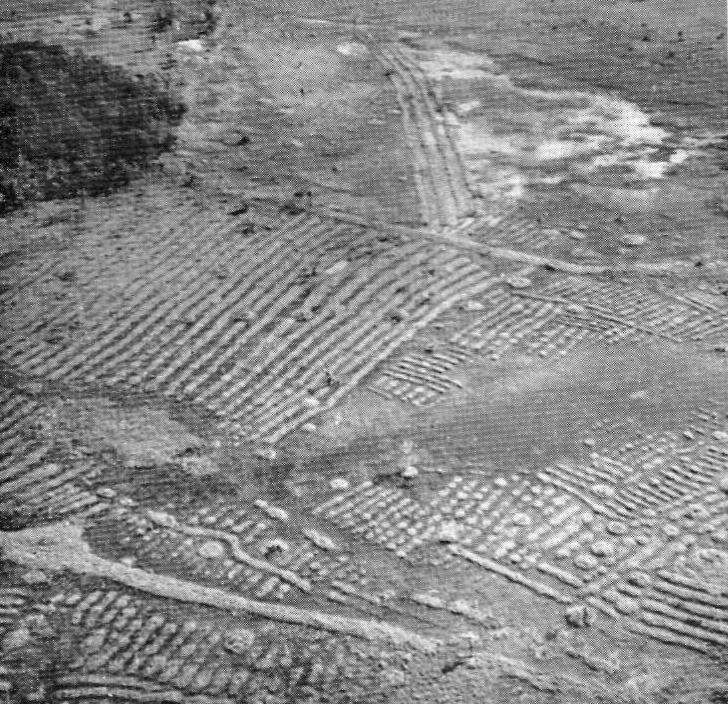
|
|
Fig. 1 Aerial view of the camellones of the Llanos de Mojos, Beni, Bolivia (Denevan, 1966). |
Professor of Civil and Environmental Engineering
San Diego State University
San Diego, California [091106]
Victor M. Ponce
• INTRODUCTION •
Nutrients are chemical elements and compounds required by the biosphere for its proper functioning.
Nutrient balance refers to the accounting, under various time scales, of the source, transport, and fate of nutrients in ecosystems, both natural and artificial.
The characteristics of the nutrient balance determine the success or failure of artificial ecosystems, upon which humans depend for food and fiber.
As shown here, even for natural ecosystems the nutrient balance is paramount.
The flood pulse is the annual seasonal flooding of relatively flat, low-lying areas adjacent to major rivers (Junk et al., 1989).
The flood pulse is conditioned by the local and regional climate, geology, and geomorphology.
The nutrient balance is affected and conditioned by the flood pulse.
In these ecosystems, geology, geomorphology, hydrology, and ecology are intertwined in such a way that it is impossible to separate them.
They must be considered as a whole, leading to holistic ecosystem analysis.
• THE NITROGEN CYCLE •
Among the essential nutrients, nitrogen stands out because it is widely available. Molecular nitrogen (N2) constitutes 78% of the Earth's atmosphere.
Nitrogen cycles through the biosphere by way of four biochemical processes: (1) fixation, (2) ammonification, (3) nitrification, and (4) denitrification.
Under fixation, nitrogen enters the biosphere through the mediation of nitrogen-fixing bacteria.
Under ammonification, decaying organic matter is converted into gaseous ammonium compounds.
Under nitrification, ammonium compounds are converted (oxidized) to (solid) nitrites first, and then to nitrates.
Finally, under denitrification, nitrates are converted (reduced), through a series of intermediate steps, to molecular nitrogen which escapes to the atmosphere, closing the nitrogen cycle.
The four processes are required to close the nitrogen cycle.
Significantly, the absence of denitrification will have the effect of opening the nitrogen cycle.
Under this scenario, the nitrogen will tend to accumulate in the lithosphere, where it becomes available for harvest as a component of food and fiber, if necessary.
On the other hand, effective denitrification will close the nitrogen cycle, thus inhibiting nitrogen accumulation and impairing (possible) harvesting.
• NATURAL VS ARTIFICIAL ECOSYSTEMS •
Natural ecosystems are subject to natural laws.
Artificial ecosystems such as agriculture, particularly irrigated agriculture, have social and economic constraints which translate into practices or laws.
Export of nutrients is an established practice in the management of artificial ecosystems.
[Recall the Basmati rice that you can purchase at the grocery store].
Nutrient export cannot proceed in the presence of effective nutrient cycling.
In the absence of external inputs, a naturally denitrifying ecosystem will not work well for agriculture, because the nitrogen will be lost (returned to the atmosphere) and not be available for export.
• DENITRIFYING ECOSYSTEMS •
What are these denitrifying ecosystems unsuited for agriculture?
They are certain flood-pulse ecosystems, in which the combination of climate, geology, geomorphology, and hydrology is such that it encourages denitrification.
Alternating periods of aerobiosis and anaerobiosis in a natural ecosystem will lead to nitrification, followed by denitrification, and thus, the return of nitrogen to the atmosphere (Welch, 1982).
Aerobiosis occurs during the dry period; anaerobiosis during the wet or flooding period, if the latter lasts long enough.
An annual flood pulse, with a sequence of dry and wet periods lasting approximately six months each, will have a tendency to close the nitrogen cycle.
[Note that the rate of oxygen diffusion in water is 10,000 times smaller than that in air].
Anthropogenic nutrient export will be difficult under such conditions.
The denitrifying ecosystems may be well suited for other uses, such as cattle grazing and wildlife habitat, but not for intensive export agriculture.
• FIRST EXCLUSION PRINCIPLE •
A first exclusion principle may be stated as follows: "Flood-pulse ecosystems are naturally not conducive to intensive export agriculture."
A singular example of this principle is represented by the aboriginal cultural geography of the Llanos de Mojos, in Beni, Bolivia (Denevan, 1966).
The native prehispanic population of the Llanos de Mojos knew that their lands were too flat and subject to seasonal flooding.
Throughout the years, they learned that the only way to open the nitrogen cycle, thus making possible nutrient export, was to build the raised fields, or "camellones" (Figs. 1 and 2).
These anthropogenic features of the landscape sought to causeway the flood in order to keep portions of the land sufficiently dry throughout most, if not the entire year.
The number and aerial extent of these raised mounds attest to the ingenuity and perseverance of the early peoples of the Llanos de Mojos.
Denevan (op. cit.) has estimated a minimum of 100,000 drained fields occupying 15,000 acres spread unevenly over an area of 30,000 square miles in the western Beni.
Such example of agricultural engineering on a massive scale shows how humans in this part of the world were able to survive despite seemingly insurmountable odds.
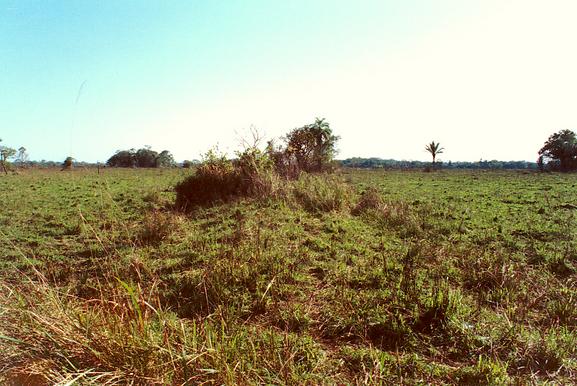
|
| Fig. 2 Hammock in the Llanos de Mojos, Beni, Bolivia. |
• SECOND EXCLUSION PRINCIPLE •
A related exclusion principle, which does not involve human action or need, may be stated as follows: "In flood-pulse ecosystems, the survival of woody vegetation hinges upon their symbiotic relationships with hammocks."
The application of this principle is embodied in the distinctive hammocks which exist in the Florida Everglades (Figs. 3 and 4), the Pantanal of Mato Grosso (Figs. 5 and 6), and the floodplain of the Rio Araguaia (Figs. 7 and 8), to name a few.

|
|
Fig. 3 Aerial view of hammocks, Everglades, Florida.
Note that the longitudinal alignment is parallel to the flow direction. (Source: Google Earth). |
A hammock is an island of woody vegetation within the great expanse of seasonally flooded herbaceous plains.
Generally, trees cannot establish themselves from seed in continually wet soil (Eiten, 1975).
Therefore, the islands formed, through the Quaternary period, by progressive sedimentation for the purpose of enabling the colonization of the floodplains by woody vegetation.
Moreover, the nitrogen cycle was opened, enabling nutrient accumulation and export, albeit somewhat limited under browsing by wildlife.
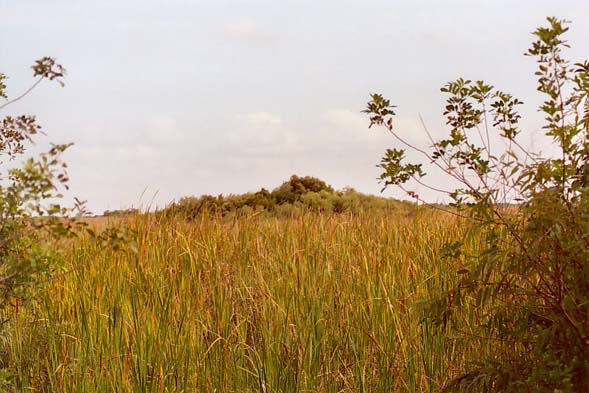
|
| Fig. 4 A hammock near the Tamiami Trail, the Everglades, Florida. |
• CONCLUDING REMARKS •
Opening the nitrogen cycle is a prerequisite for the sustenance of natural and artificial ecosystems that depend on this nutrient for their survival and/or subsequent export.
Two related exclusion principles are formulated: (1) Flood-pulse ecosystems are naturally not conducive to intensive export agriculture, and (2) In flood-pulse ecosystems, the survival of woody vegetation hinges upon their symbiotic relationships with hammocks.
The camellones of the Llanos de Mojos are an excellent example of the first principle.
The hammocks of the Everglades, the Pantanal of Mato Grosso, and the floodplain of the Rio Araguaia are clear examples of the second exclusion principle.
Additional research into the nitrogen cycle, including the crucial denitrification stage, will throw additional light on the workings of nature and their emulation by humans.
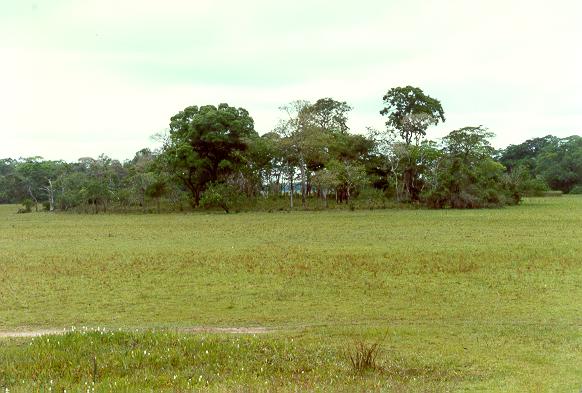
|
| Fig. 5 Large hammock in the Pantanal of Mato Grosso, Brazil. |
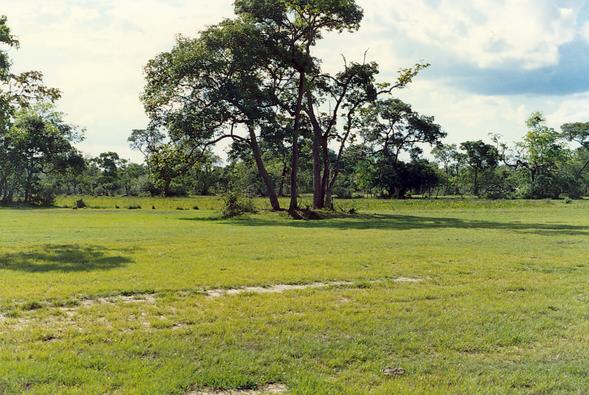
|
| Fig. 6 Small hammock in the Pantanal of Mato Grosso, Brazil. |
• REFERENCES •
Denevan, W. M. 1966. The aboriginal cultural geography of the Llanos de Mojos of Bolivia, Iberoamericana, 48, University of California Press, Berkeley and Los Angeles.
Eiten, G. 1975. The vegetation of the Serra do Roncador. Biotrop., 7, 112-135.
Junk, W. J., P. B. Bailey, and R. E. Sparks. 1989. The flood-pulse concept in river-floodplain systems. Proceedings of the International Large River Symposium, Canadian Special Publication Fishing and Aquatic Sciences, 106, 110-117.
Smith, A. 1971. Mato Grosso: Last virgin land. Dutton, New York.
Welch, E. B. 1982. Ecological effects of wastewater, Second Edition, Chapman and Hall, London.
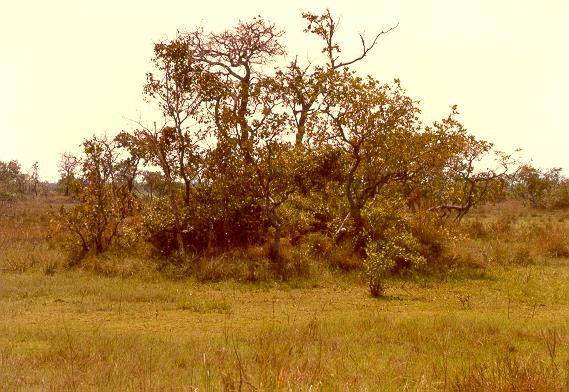
|
| Fig. 7 Hammock in the floodplain of the Rio Araguaia, Brazil. |
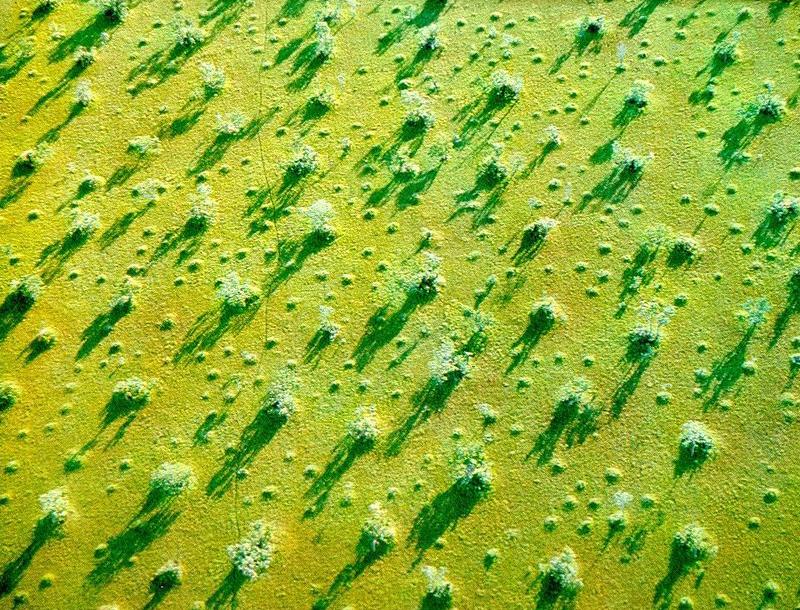
|
| Fig. 8 Hammock pattern in the floodplain of the Rio Araguaia, Brazil (Smith, 1971). |